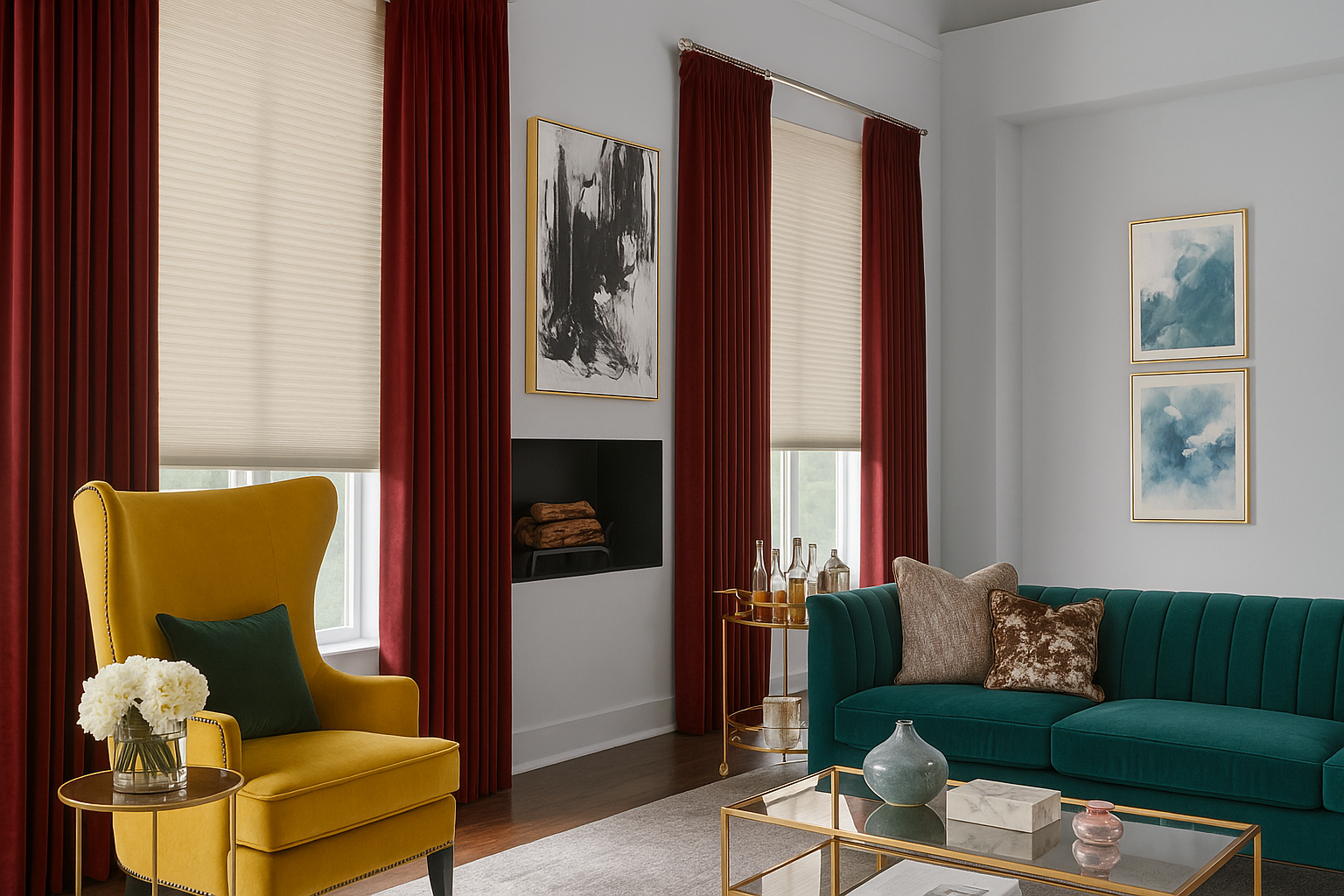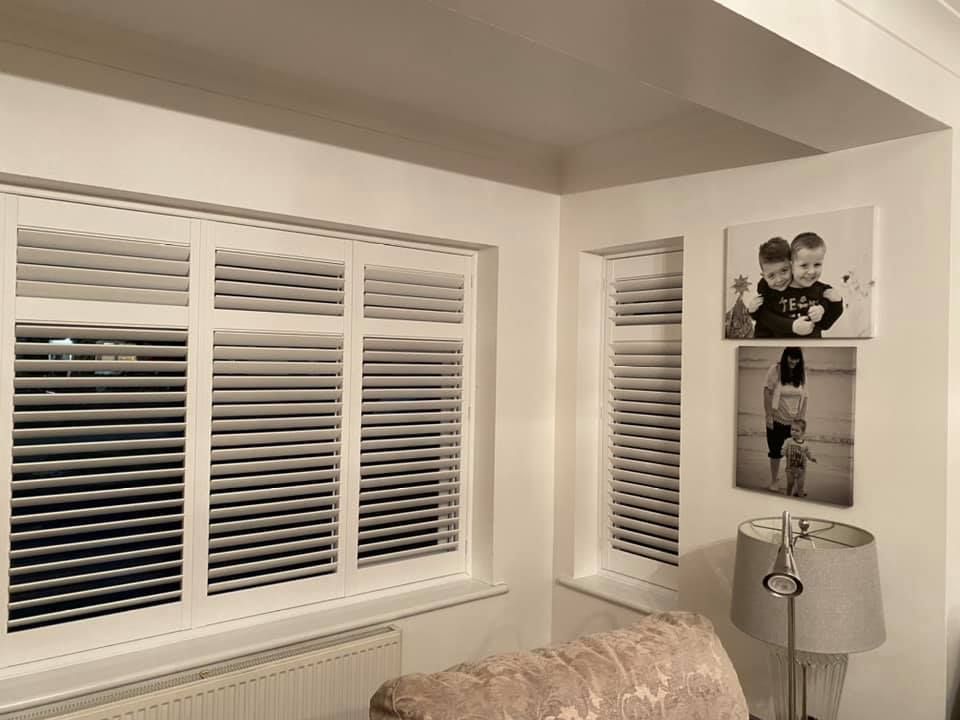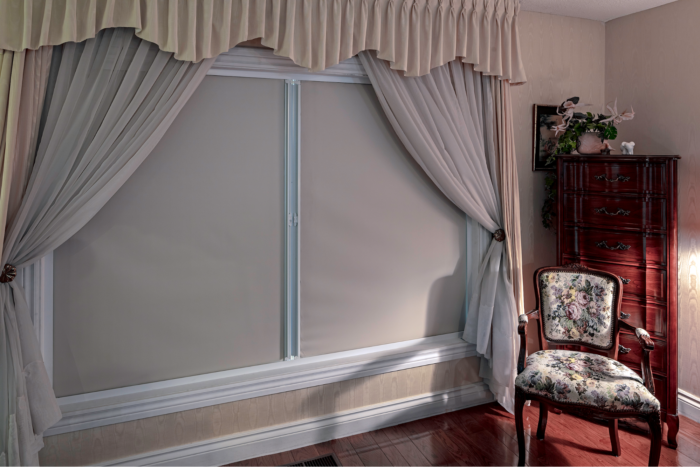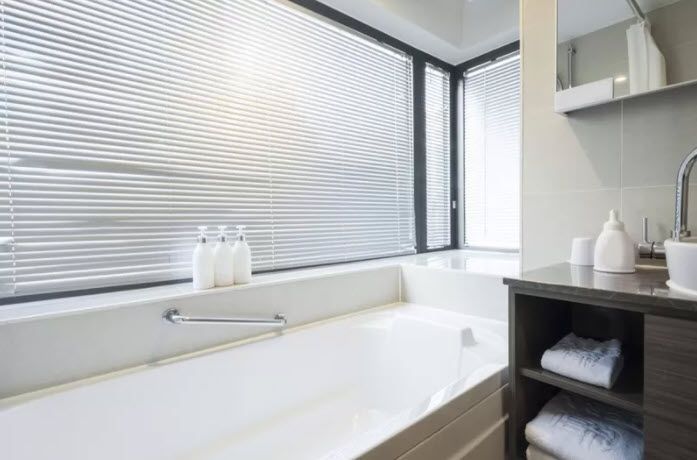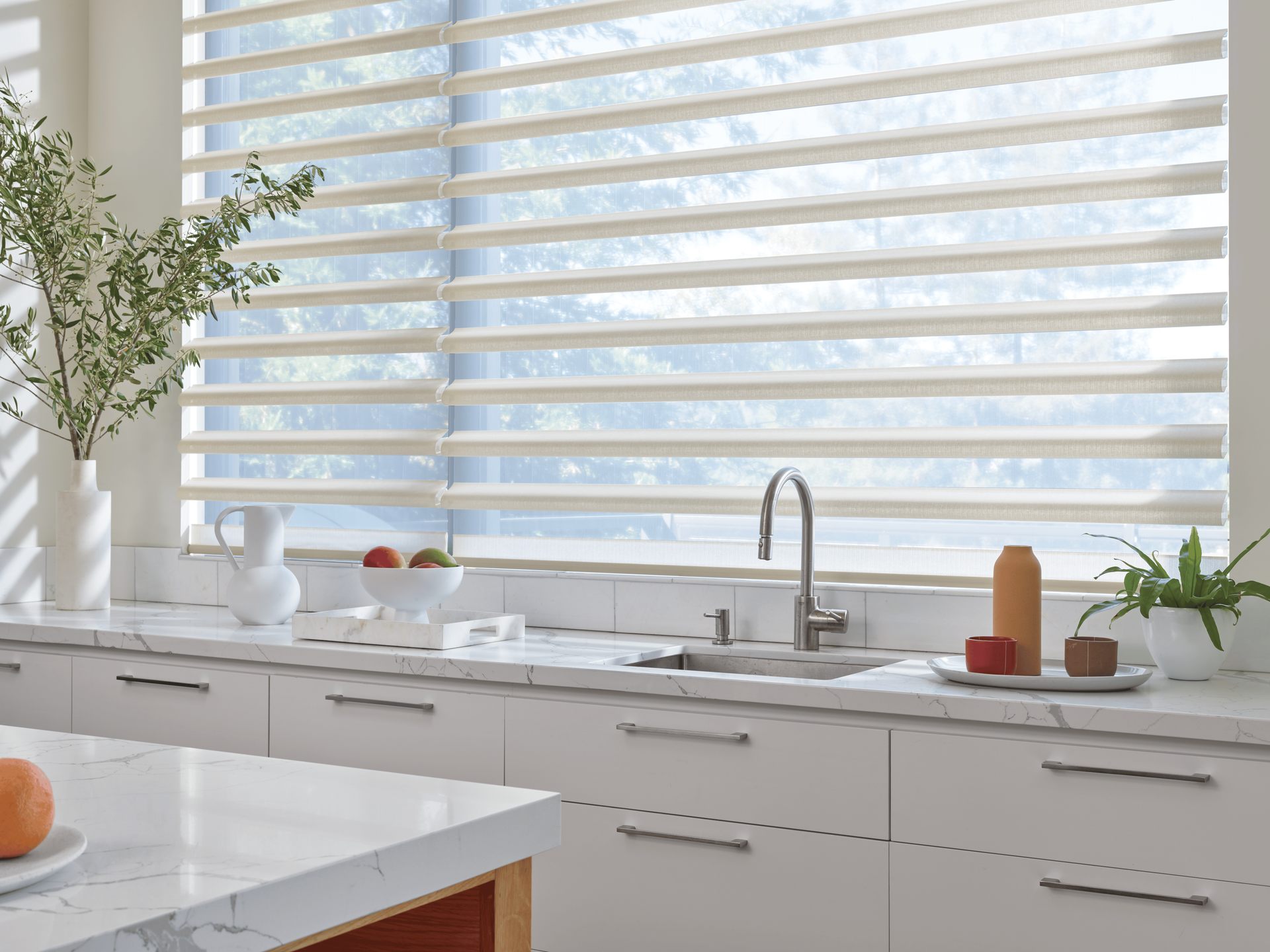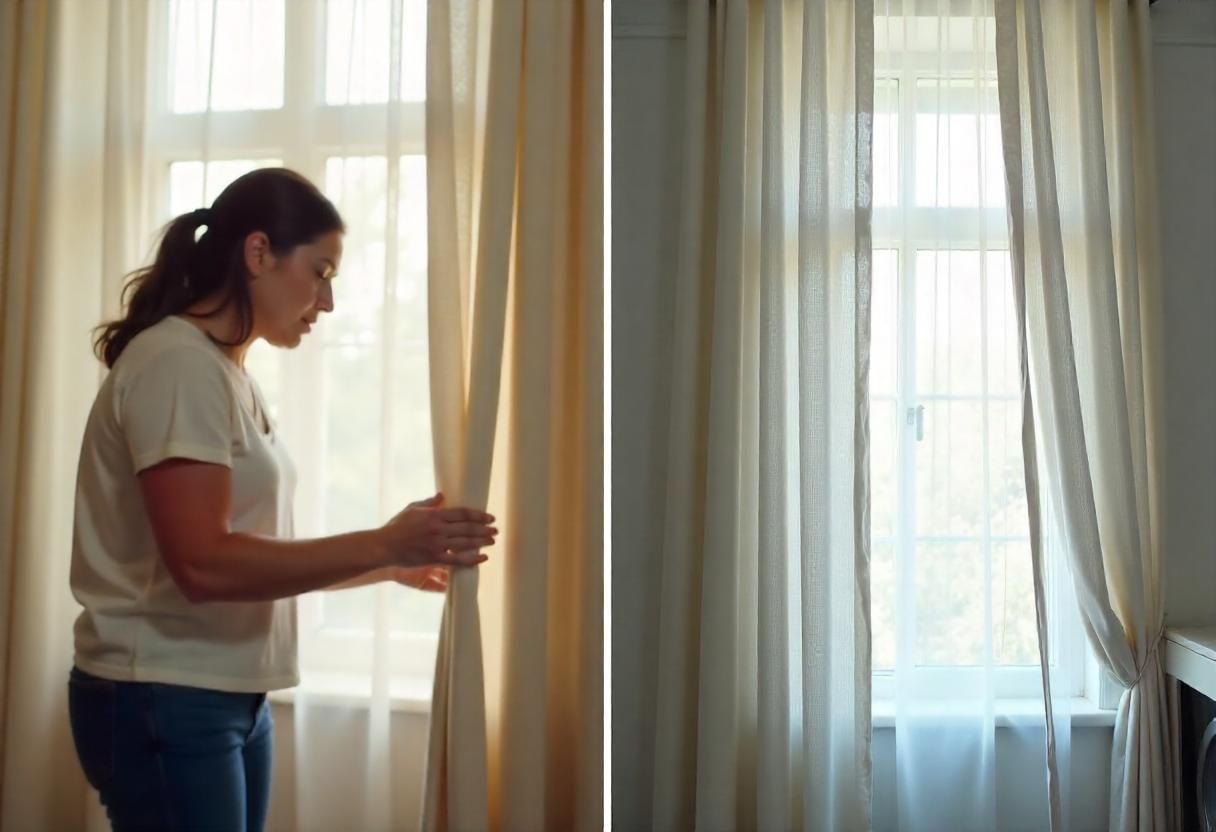How to Mix Modern and Traditional Window Treatments Without Clashing
TLDR;
To mix modern and traditional
window treatments without clashing, focus on a unified color palette, balanced textures, and cohesive hardware. Combine clean-lined shades or blinds with classic drapery or valances while keeping proportion, placement, and light control consistent across the room. The key is balance—let one style lead while the other supports.
Understanding the Styles: What Is Modern vs Traditional in Window Treatments

Mixing design eras begins with understanding what defines them. Modern window treatments emphasize simplicity and function, while traditional ones focus on texture, ornamentation, and classic detailing.
Defining Modern Window Treatments
Modern window treatments feature:
- Clean lines and minimalism
- Simple fabrics like linen, cotton, or sheer blends
- Sleek hardware in matte finishes
- Roller shades, solar shades, or
motorized blinds for convenience
- Light-filtering options that provide privacy without heaviness
They work well in open spaces or minimalist window treatments interiors, emphasizing clarity and light control.
Defining Traditional Window Treatments
Traditional window treatments include:
- Heavy drapery or layered curtains
- Ornate finials, rods, or valances
- Luxurious materials like velvet, brocade, or silk
- Patterns such as florals, damask, or stripes
- Structured pleats and full-bodied panels
They suit interiors focused on comfort, elegance, and warmth.
Why the Clash Happens
A clash occurs when elements compete for attention instead of complementing each other.
Common reasons include:
- Conflicting materials (for example, aluminum blinds with brocade curtains)
- Mismatched scale or pattern density
- Overly contrasting color temperatures
- Ignoring proportions of window size versus treatment weight
Balance starts with consistency—choose details that visually link both eras.
The Benefits of Mixing Styles (and When It Works)

Mixing modern and traditional window treatments adds depth, flexibility, and character to a space. When done thoughtfully, it enhances both function and design.
Achieving a Transitional Look
Transitional décor bridges two worlds. It blends the comfort of traditional design with the sleekness of modern aesthetics.
- Use neutral color palettes
- Simplify patterns to prevent overcrowding
- Incorporate moderate textures like linen drapes with a subtle sheen
This creates harmony rather than competition.
Enhanced Functionality: Light Control and Privacy
Layering allows better control of light and privacy. For example:
- Combine roller shades for daytime glare control with lined drapery for nighttime privacy
- Use sheers under structured curtains for adjustable light flow
- Mix blackout cellular shades with traditional top treatments to balance comfort and performance
Boosting Curb Appeal and Interior Harmony
Consistent design from inside to outside adds to curb appeal. When your windows align stylistically, the home feels cohesive.
From the street, coordinated silhouettes of
blinds and curtains project elegance and order. Inside, textures and tones flow naturally.
Key Principles for Blending Modern and Traditional Window Treatments

The goal is cohesion, not contrast. These five principles from Love Is Blinds MI professionals help ensure your mix feels deliberate.
1. Choose a Dominant Style and a Supporting Style
Select one design language as the lead.
- Example: Let sleek roller shades set a modern tone, while soft linen drapes bring warmth.
- If your room leans traditional, choose minimal blinds to introduce balance.
A 70/30 ratio—dominant to secondary—is often effective.
2. Align Scale, Proportion, and Placement
Proper scale prevents visual chaos.
- Tall windows suit long drapes or layered sheers
- Smaller windows benefit from low-profile blinds
- Mount curtain rods higher to elongate walls and blend both aesthetics
Visual proportion keeps your mix structured and calm.
3. Use Texture and Material to Create Unity
Texture connects styles through tactile consistency.
- Pair sleek metal blinds with soft woven fabrics
- Mix matte finishes with light-reflective accents
- Avoid high-gloss metallics next to rustic woods unless balanced by a neutral element
The result is a balanced sensory experience.
4. Harmonize Color Palettes and Finishes
Color bridges stylistic gaps.
- Stick to one temperature family (warm or cool)
- Layer tones like beige, cream, and taupe for soft transitions
- Use metallics consistently (brushed nickel, matte black, or antique brass)
Small consistencies have large visual impact.
5. Layer Strategically for Function and Style
Layering modern and traditional elements enhances versatility.
- Base layer: functional modern shade or blind
- Top layer: decorative curtain or valance
- Accent: hardware that complements both styles
This combination lets you control light, texture, and ambiance simultaneously.
Practical Pairings and Combinations That Work

When pairing window coverings, think of contrast through compatibility, not opposition.
Modern Shades or Blinds with Traditional Drapery Panels
Roller or solar shades pair beautifully with pinch-pleat drapery.
- Roller shade provides clean structure
- Drapery adds softness and movement
- Choose a unifying tone, like neutral gray or ivory
Shutters or Wooden Louvers with Sheer Curtains or Roller Shades
Traditional shutters ground a space with heritage character.
Add modern sheer panels or
roller shades for flexibility.
- Shutters manage privacy and insulation
- Sheers add light control and softness
Contemporary Minimal Hardware with Ornate Fabric Treatments
Streamlined rods in matte finishes offer balance when combined with intricate fabrics.
- Example: matte black rod with embroidered curtains
- The simplicity of the hardware tames ornate detailing
Room-by-Room Pairing Examples
Living Room
- Use solar shades for glare reduction
- Add pleated drapery for decorative framing
- Choose linen or textured cotton for transitional charm
Bedroom
- Combine blackout roller shades with velvet curtains
- Maintain cohesive tones for relaxation
- Layered treatments also improve insulation and privacy
Kitchen
- Try bamboo blinds paired with simple café curtains
- Use washable materials for practicality
- Blend function and comfort effortlessly
Budget vs Premium Options
You don’t need high-end materials to achieve balance.
- Mix cost-effective
roller shades with high-quality drapery fabric
- Upgrade visible hardware while saving on hidden mechanisms
- Reuse traditional rods with new minimalist curtains
Balance is about proportion and attention, not price.
Avoiding the Pitfalls – What to Watch Out For

Even a strong design can falter with small mistakes.
Mismatched Hardware or Rods
Hardware unifies treatments. Avoid:
- Mixing shiny chrome with aged brass
- Using rods of varying thicknesses across the same room
Consistency ties everything together.
Competing Patterns or Colors
Two strong patterns fight for attention. Keep one dominant.
- If drapery has bold prints, use solid blinds
- Mix pattern scales carefully: small geometric with large floral
Overwhelming Scale or Cluttered Look
Over-layering makes windows look heavy.
- Keep folds neat and spacing even
- Allow open visibility during the day for balance
Failing to Consider Function
Every design must perform.
- Prioritize light, privacy, and ventilation
- Don’t block venting windows with long curtains
- Choose easy-to-clean materials in high-use spaces
Function sustains beauty.
Step-by-Step Process to Plan Your Window Treatment Blend

A methodical plan ensures your final result feels intentional and timeless.
Step 1: Measure and Assess Each Window
Know your dimensions before you start.
- Record height, width, and depth
- Note sunlight direction and privacy needs
Step 2: Select Your Dominant Style
Decide whether your room leans modern or traditional.
- Base this on existing furniture and wall textures
- A clear direction keeps decisions consistent
Step 3: Choose Treatments and Materials with Compatible Finishes
Pick elements that share tone and texture.
- If using chrome blinds, select rods or rings in the same finish
- Blend linen or cotton drapery with smooth blinds for tactile consistency
Step 4: Install in Logical Layering Order
Install functional elements first.
- Roller or
cellular shades go closest to glass
- Drapery panels mount outside to frame the window
This maintains visual depth and practical control.
Step 5: Evaluate and Adjust
Observe the mix under different lighting throughout the day.
- Test both open and closed positions
- Adjust curtain fullness or rod placement for better balance
Design refinement is a gradual process.
Frequently Asked Questions

